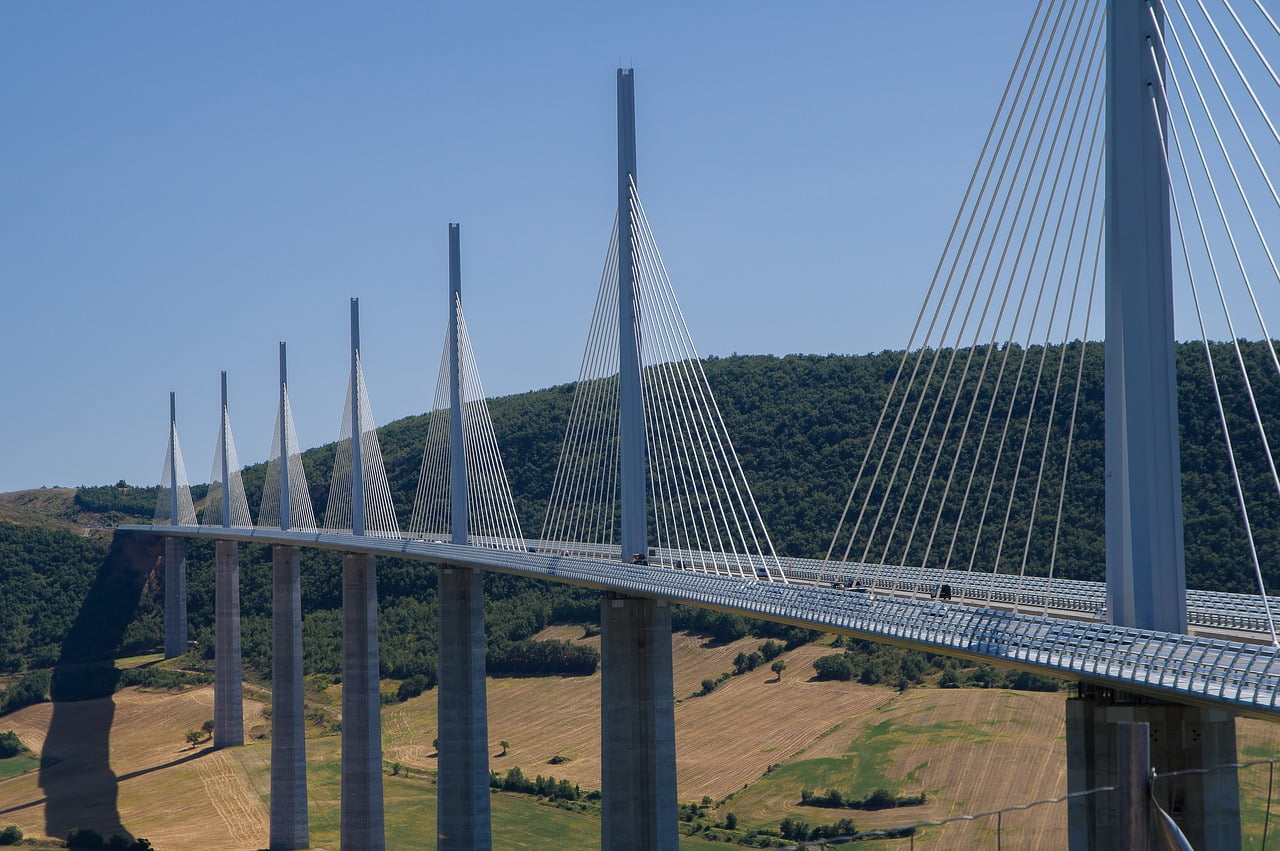One of the most fascinating bridges in the world can be found in the south of France.
In this post, you’ll discover the ultimate list of interesting Millau Viaduct facts, a famous bridge in France that holds an amazing record!
1. The bridge is located in the valley of the Tarn
The Millau Viaduct is an amazing multi-span cable-stayed bridge located in the valley of the Tarn in the southern part of France. It’s located near the town with the same name in the Aveyron department of the country. That’s pretty much in the center of southern France.
The landscape in this region is amazing as the town is located in the so-called “Gorges du Tarn,” an amazing canyon created by the river Tarn. Millau is located at the confluence of the river Tarn with the river Dourbie.
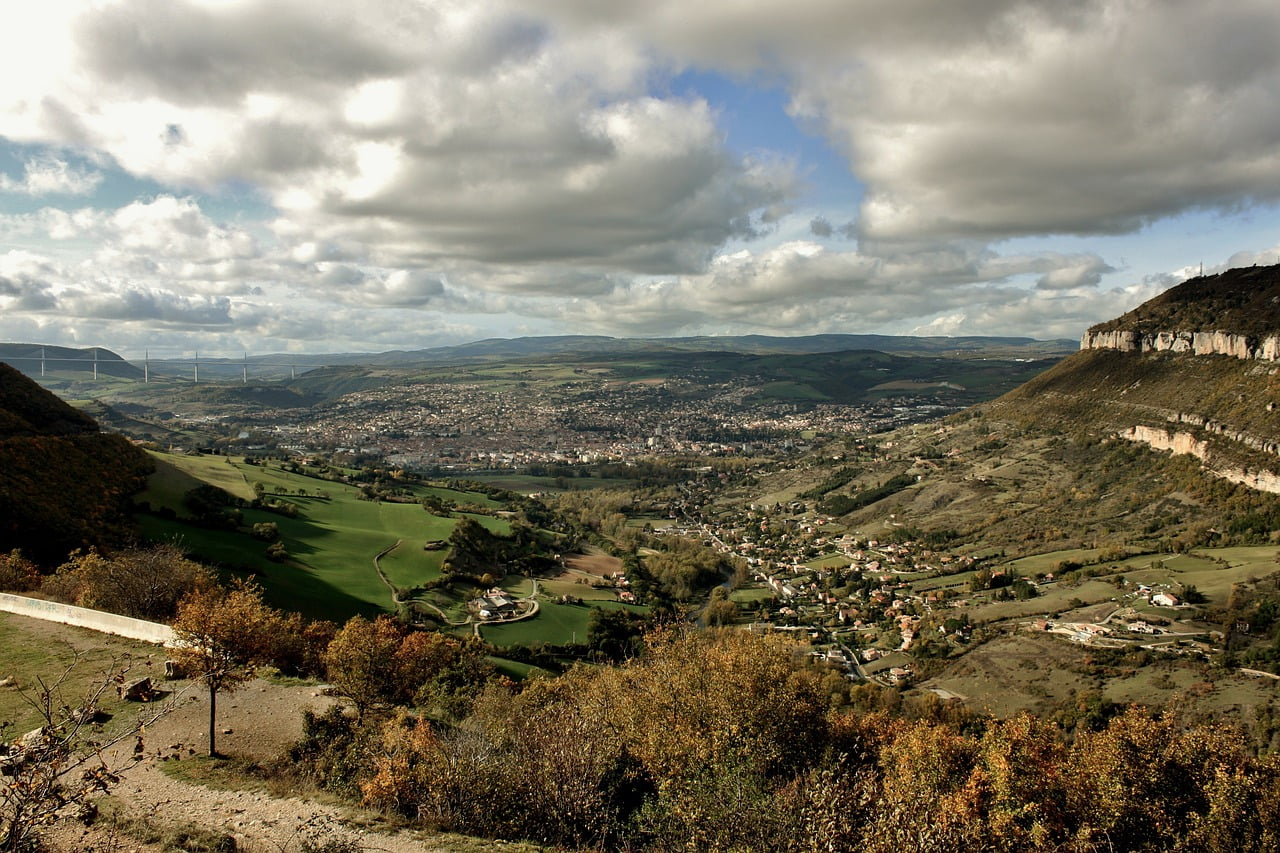
2. It’s still the tallest bridge in the world
One of the most amazing Millau Viaduct facts is that it’s up until writing this article (January 2021) still the tallest bridge in the world. It reaches a maximum height of 336.4 meters (1,104 feet) above the ground below it which is near the tallest pylon.
Some bridges in China, including the Pingtang Bridge (332 meters / 1,089 feet) and the Hutong Yangtze River Bridge (325 meters / 1,066 feet), have come close in 2019 and 2020 respectively. The Yavuz Sultan Selim Bridge in Istanbul, Turkey, which was completed in 2016 is about the same height at 322 meters (1,056 feet) as well.
The Viaduct in Millau has a total length of 2,460 meters (8,070 feet) a width of 32.05 meters (105.2 feet), and 6 long spans each with a length of 342 meters (1,122 feet), and 2 shorter spans with a length of 204 meters (669 feet) each.
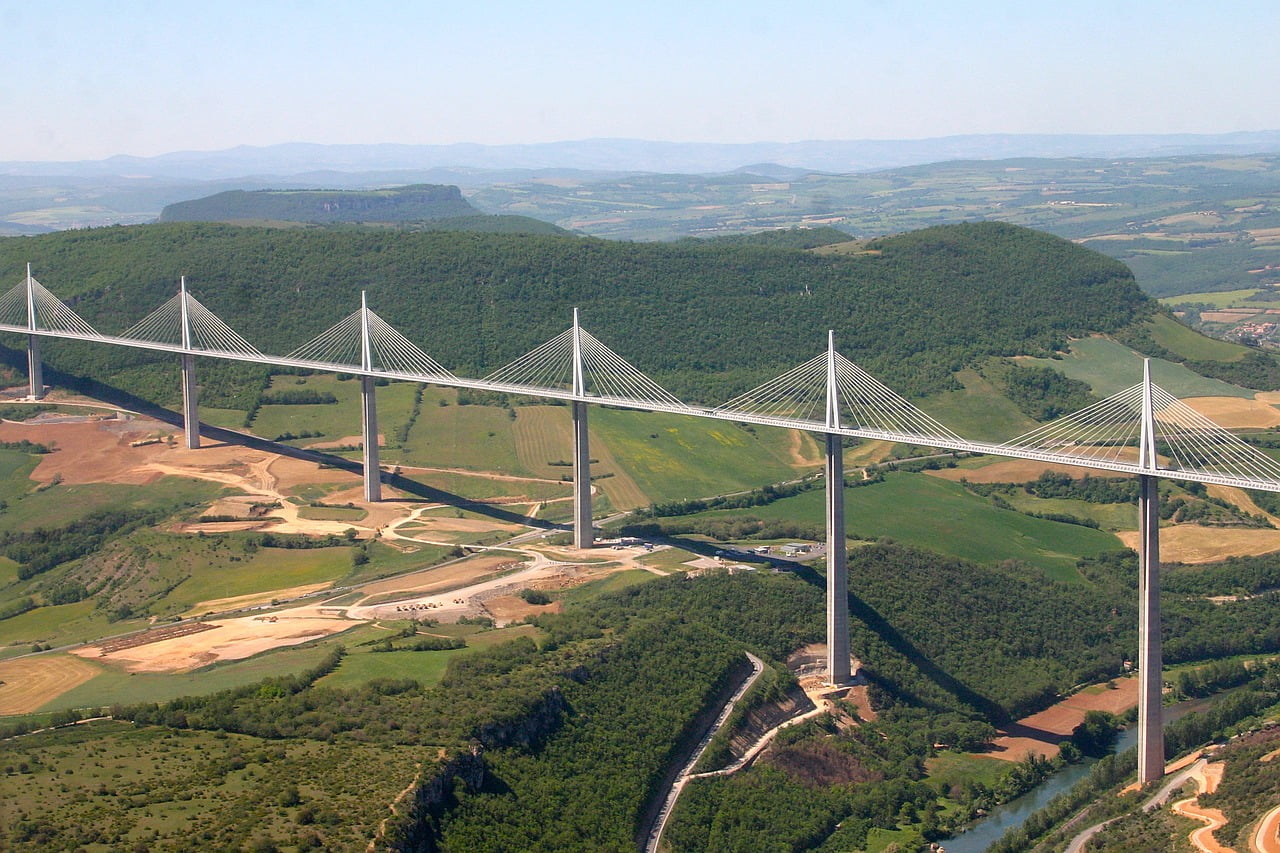
3. The bridge also features the highest pylons in the world
Equally impressive is the fact that the bridge also features the tallest pylons in the world. There are a total of 7 pylons that support the bridge and the two tallest are P2 and P3 located nearest to the river.
These two pylons have a height of 244.96 meters (803 feet 8 inches) and 221.05 meters (725 feet 3 inches) respectively, which means that the P2 pylon is the tallest in the world!
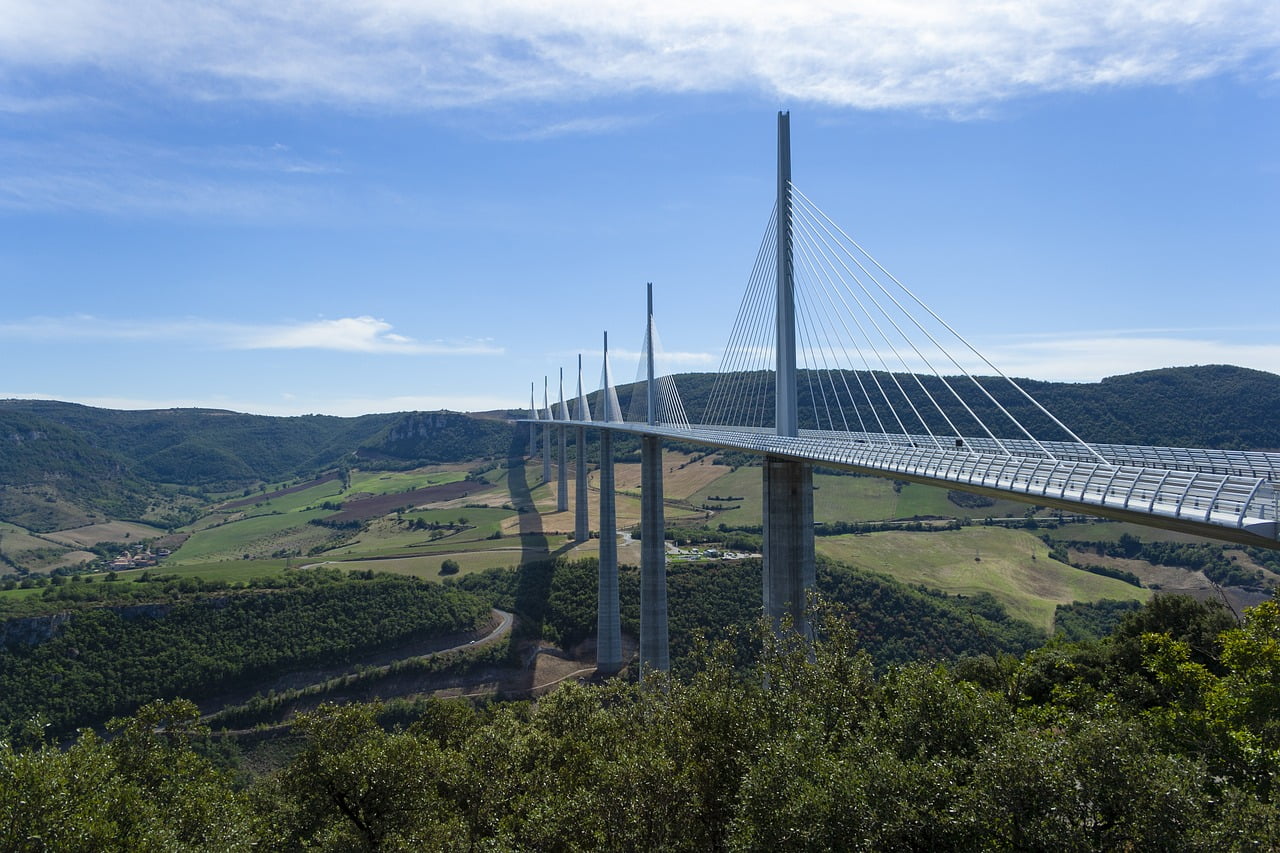
4. A bridge from 1929 in the US already had a higher deck
The Viaduct doesn’t feature the highest deck in the world as it has been surpassed by several bridges already. It also didn’t have the highest deck upon completion because a bridge built in 1929 near Cañon City in Colorado called the Royal Gorge Bridge already had a higher deck!
The Viaduct has a deck height of 270 meters (890 feet) while the deck of the Royal Gorge Bridge reaches a height of 291 meters (955 feet) above the Arkansas River.
It still remains the highest deck of any bridge in Europe though and is much higher than for example the Italia Viaduct in Italy (260 meters / 850 feet) and the Europa Bridge in Austria (190 meters / 620 feet).
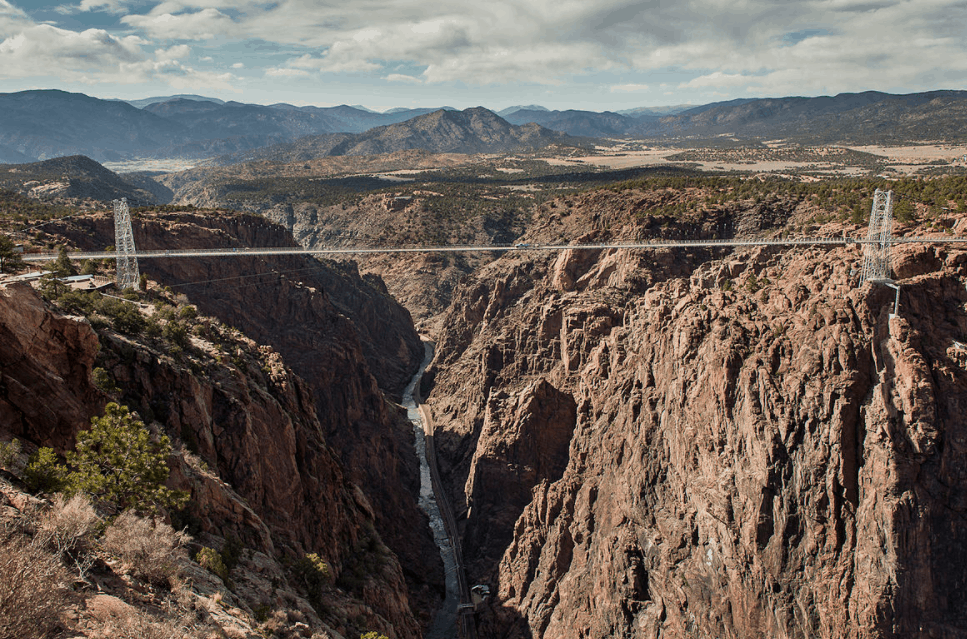
5. It was built to avoid traffic jams during the summer
Millau is located on the road between Paris and Spain, referred to as the A75–A71 autoroutes. These highways are the main roads down south and travel from Paris to Béziers and Montpellier, a city near the Mediterranean Sea.
This also means that this is the road taken by travelers who want to reach Spain which has multiple popular holiday spots on the Costa Brava and Costa Blanca.
Before the bridge was built, all this traffic had to go down into the Tarn Valley and pass the town of Millau, causing a lot of traffic jams in the process. That means that the Viaduct was built to bypass the town and avoid congested traffic during the holiday season.
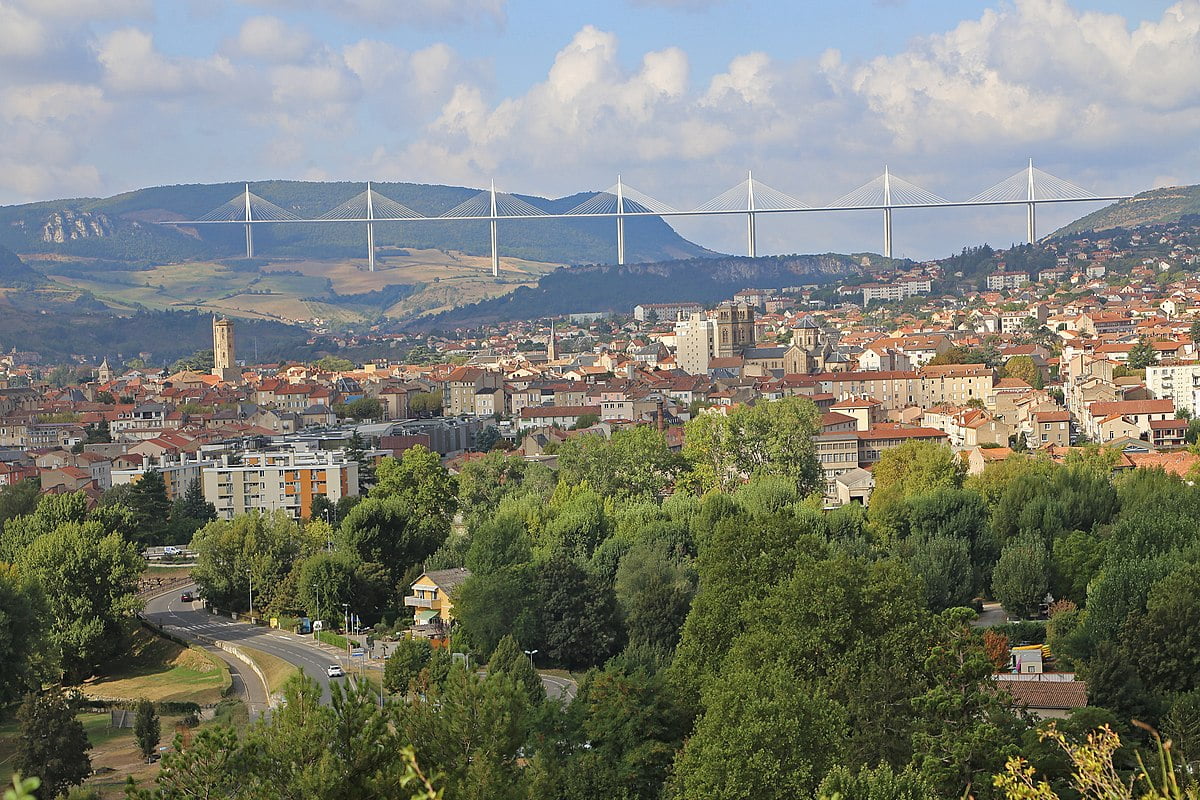
6. The original plans to build a bridge here date back to 1987
Traffic had been increasing for multiple decades and the first concrete plans to build a bridge came about in the year 1987. This came after years of contemplating about how the situation could be resolved as bypassing Millau wasn’t easy.
4 years later, the decision to build the bridge was final and between 1993 and 1994, the first studies to create a design were completed. This resulted in an official declaration issued by the French government which was published in January 1995.
This didn’t mean, however, that construction started shortly after because it would still take until October 16, 2001, before this happened. The bridge was finally completed on December 14, 2004, after a construction period of just 38 weeks!
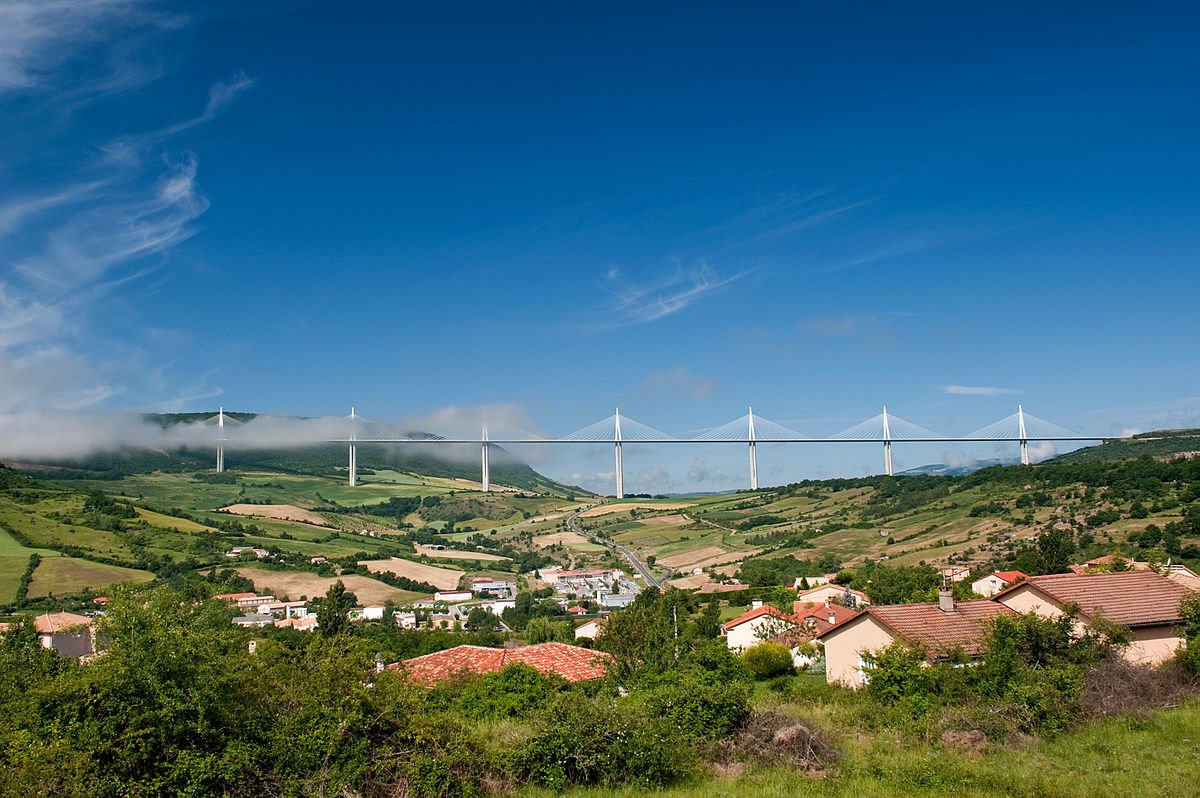
7. The design team was led by two renowned specialists
The team that managed the construction project was led by two of the most renowned specialists in the world, French engineer Michel Virlogeux and British architect Norman Foster.
The latter has designed structures all across the globe, including but not limited to the renovation of the Reichstag Building in Berlin and Wembley Stadium in London.
Virlogeux is a structural engineer who is specialized in bridge construction and has completed a number of fascinating projects as well. Some of these include the earlier mentioned Yavuz Sultan Selim Bridge in Istanbul and the Vasco da Gama Bridge in Lisbon, Portugal.

8. The location of the bridge wasn’t the only option on the table
Before they could even start to think about a design for the bridge, the most important question had to be answered which was: Where will the bridge be located?
All things had to be considered and of the 4 potential routes initially established, 3 of them had issues. These included a negative impact on the residents of Millau, a negative impact on the environment, and technical difficulties.
The route that was eventually chosen presented technical difficulties as well considering the height of the structure that was to be built, but it was deemed these could be solved.
The “High Bridge Solution” was eventually chosen, a choice that eventually resulted in this magnificent structure.
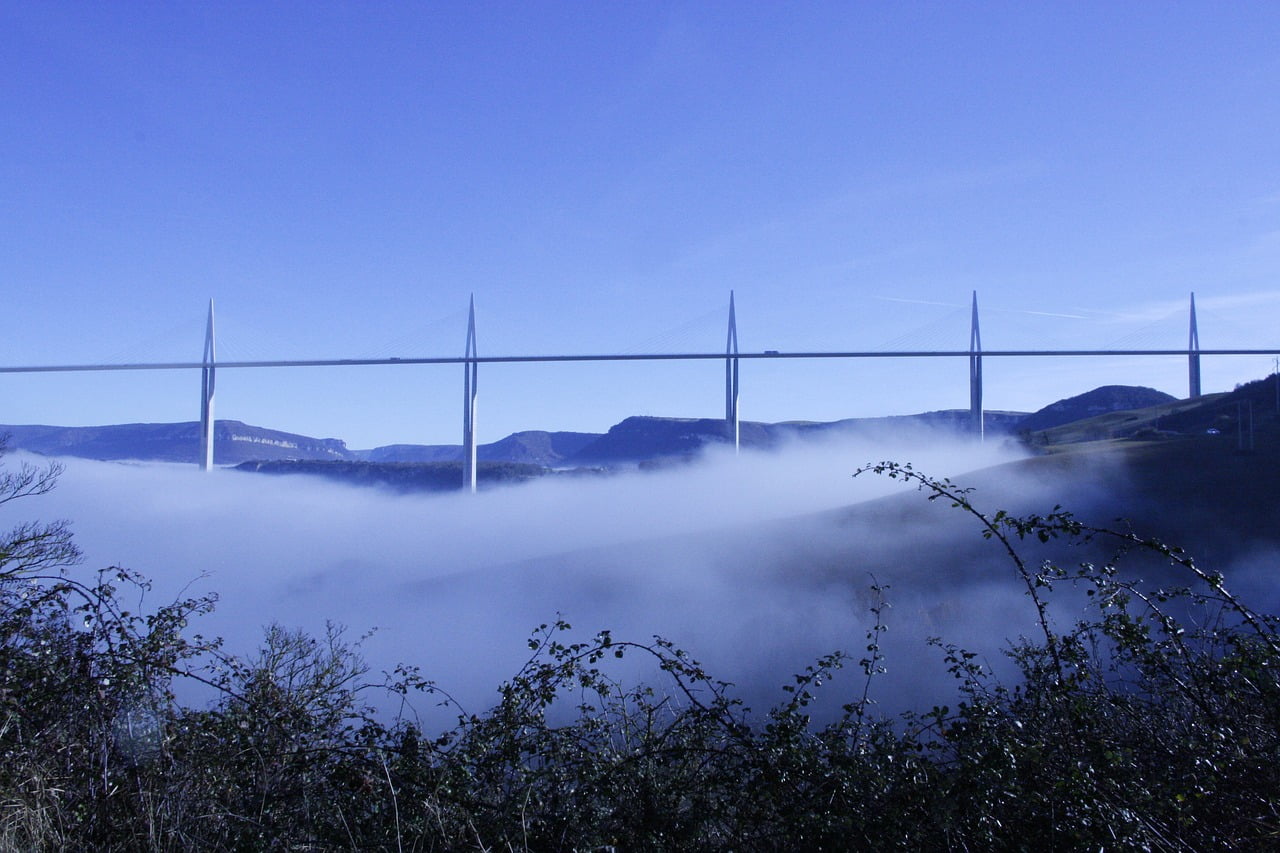
9. Building the viaduct was an extremely expensive project
The construction company that was awarded the contract is called “Eiffage” and is the third-largest construction company in France and the fifth-largest in Europe.
This company has been involved in some high-end projects, including the Channel Tunnel which runs below the English Channel (completed in 1994), and the Copenhagen Metro System (completed in 2002).
The cost of the project was enormous. The bridge itself cost a total of 394 million euros, and a toll plaza located 6 kilometers (3.7 miles) north of the viaduct cost an additional 20 million euros.
Eiffage made a deal and acquired the rights to collect the tolls earned by the bridge for more than 75 years until the year 2080. This is how this enormously costly project was eventually funded.
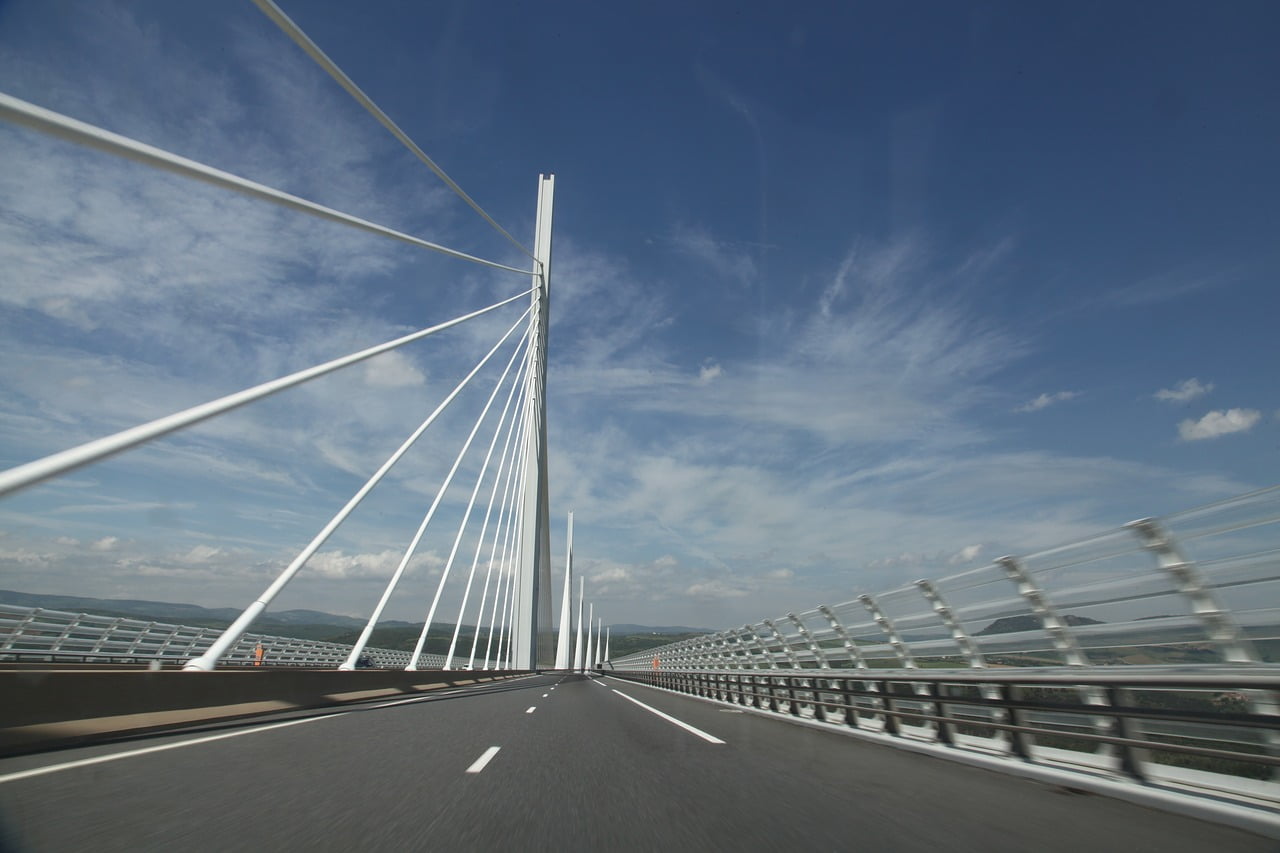
10. The viaduct has some dazzling stats
To emphasize the sheer scope of this project here are 3 of the most fascinating Millau Viaduct facts:
- The road is 4.2 meters (13 feet 9 inches) thick.
- 85,000 cubic meters (111,000 cubic yards) of concrete was used.
- The bridge weighs 290,000 tonnes (320,000 short tonnes).
This magnificent feat of engineering has also been recognized as such and received the 2006 Outstanding Structure Award from the International Association for Bridge and Structural Engineering!
